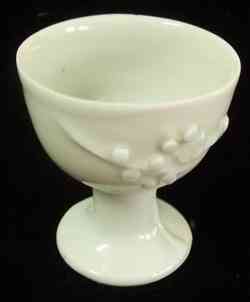Blanc-de-Chine from Dehua
Blanc-de-Chine, or white porcelain, is probably the best known product of Dehua, situated in Fujian province, accross the straits opposite of Taiwan. The white porcelain was and is one of its main products, however, production in Dehua was never limited to white porcelain only.
Dehua porcelain:
- blue and white (underglaze blue) porcelain
- white porcelain produced since the Ming dynasty
|
The cause for the whiteness of Dehua porcelain is its very low iron content, resulting in a pure, white appearance. |
 |
White porcelain
was never limited to Dehua items. However, though other kilns also
produced white items, Dehua's white porcelain was paralleled by few.
Towards the end of the Qing dynasty the pure white clay and glaze lead
to even whiter products.
In Japan, Dehua white porcelain was also renowned for its Buddhist
porcelain figures, despite the fact that such figures were also
extensively produced in Japan's Hirado and other kilns.
Distinguishing between Japanese and Dehua figurines
Dehua and Hirado white figurines can easily be distinquished by their
bottoms. The Japanese figures usually have a closed base with only a
small hole for ventilation. Additionally, Hirado wares also may show a
tinge of orange on unglazed areas.
In contrast, figurines from Dehua generally have an open bottom.
Home » 'Blanc-de-Chine' from Dehua
